Art & Exhibitions
A New Show Offers Face Time With Ancient Egyptian Funeral Portraits
"Face to Face" at Amsterdam’s Allard Pierson Museum charts the history of the famed Fayum portraits.
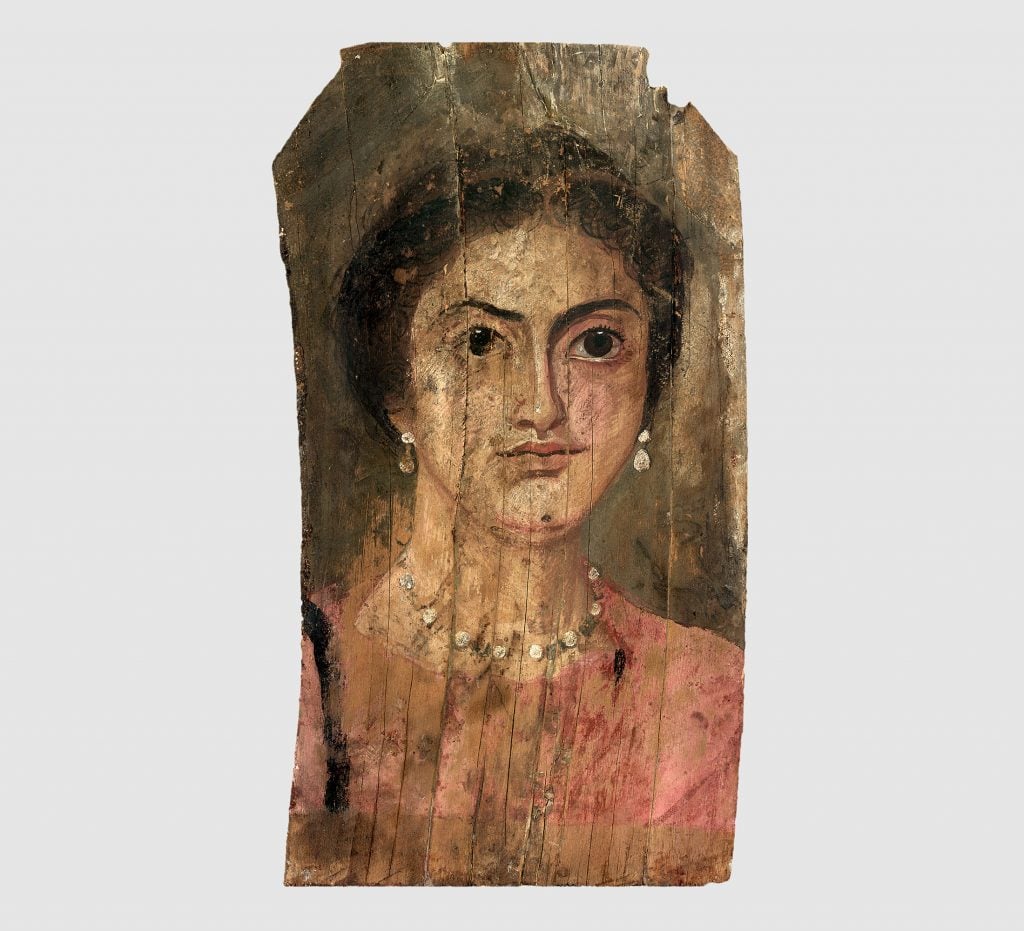
A new exhibition at the Allard Pierson Museum in Amsterdam brings together a large collection of funeral paintings from post-Ptolemaic Egypt, some loaned from the Louvre and the J. Paul Getty Museum. Known as the Fayum portraits, the bulk these artifacts were unearthed in the necropolis in Egypt’s Faiyum region, where they were found laid over the faces of mummified bodies. As one of the rare surviving Classical art forms, these works are unique for several reasons.
The first concerns their medium. Most of the art produced during classical antiquity survives in the form of statues and monuments. Not because that’s all the ancient Romans, Greeks, and Egyptians made—they had rich painting traditions—but because stone is much more durable than paint, which survived only in the rarest of instances. Just as the frescoes from the ash-covered ruins of Pompeii were preserved through volcanic eruption, the Fayum portraits survived as a result of Egypt’s desert climate.
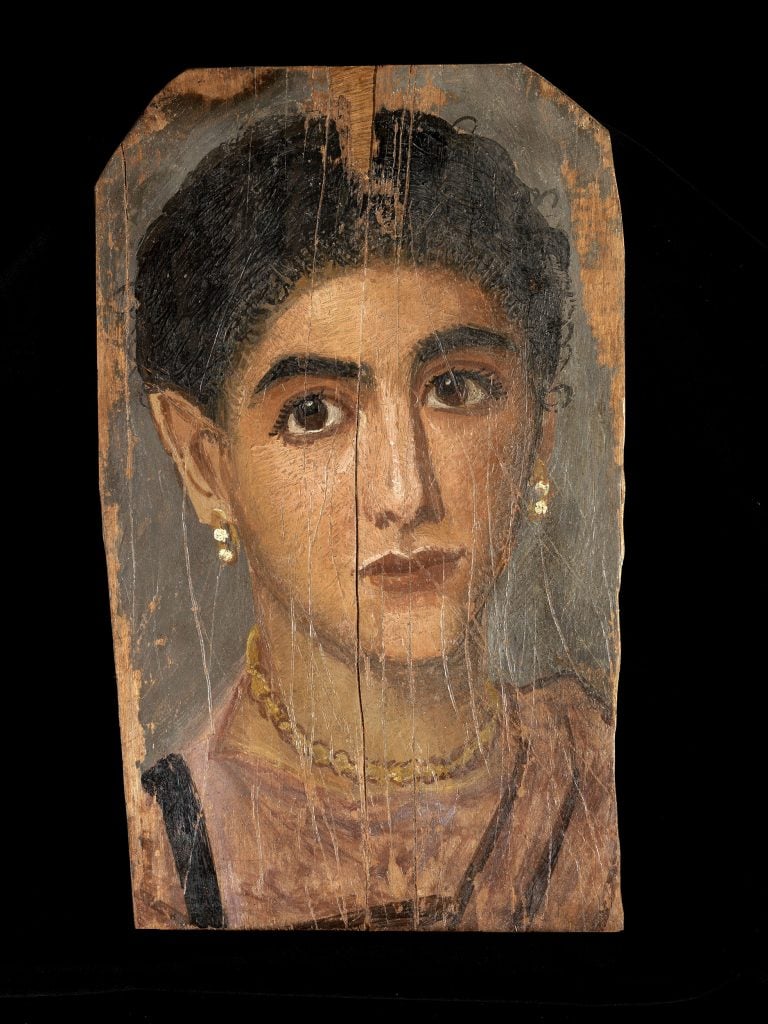
A Fayum portrait. Photo courtesy of Musée du Louvre, Department des Antiquités égyptiennes.
The second reason concerns their subject. Where the vast majority of Greco-Roman artwork depicts gods, mythological heroes, and quasi-divine emperors, the Fayum portraits are snapshots of ordinary people. The exhibition’s title, “Face to Face: The People Behind Mummy Portraits,” is fitting, for when you stare at some of these portraits, you interact with individuals who lived thousands of years ago.
One of the most striking features of the Fayum portraits is their style, which curator Ben van den Bercken describes as a melting pot of cultural influences. “They were made to be placed on top of mummified bodies,” he said. “That’s the Egyptian component: a means of keeping the diseased recognizable for the gods as well as their loved ones.”
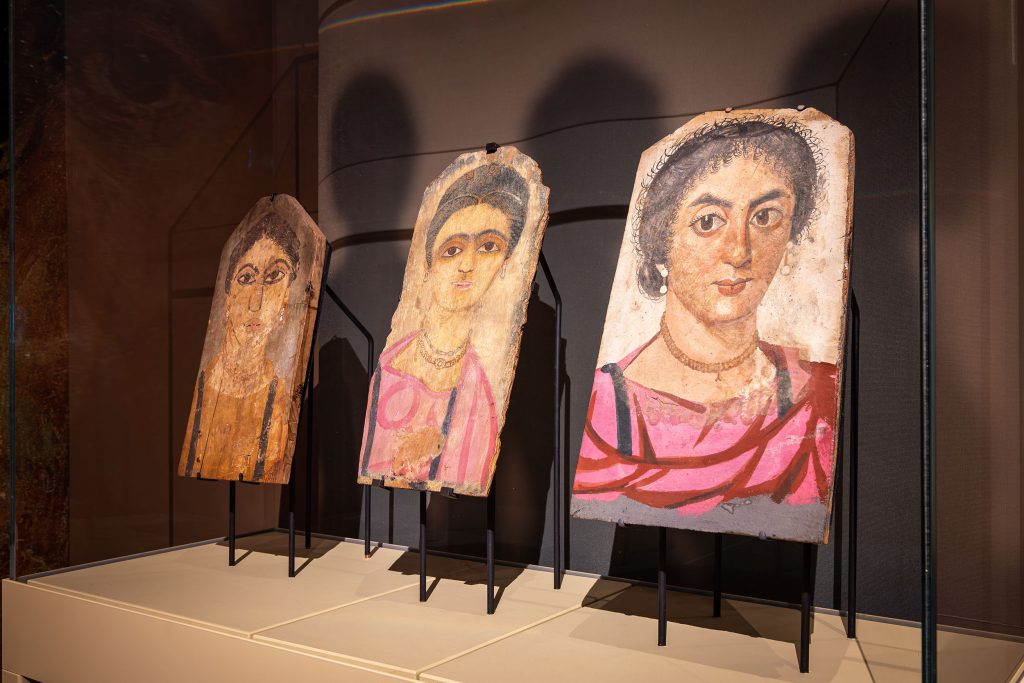
Installation view of “Face to Face: The People Behind Mummy Portraits” at the Allard Pierson Museum. Photo courtesy of Allard Pierson Museum.
Hellenistic culture—introduced to Egypt through the reign of the Ptolemaic pharaohs, whose lineage traces back to the Greco-Macedonian conqueror Alexander the Great—is present in the clothing of the subjects as well as the materials with which they were put on canvas. Tempera, an originally Egyptian tradition where pigment is mixed with water-soluble binders like egg yolk, is frequently combined with encaustic or hot wax painting—a Greek approach Van den Bercken speculates may have been taught in Egypt’s Hellenistic schooling systems.
“The interesting thing about encaustic painting is the skill involved,” he said. “Since you cannot make adjustments once the wax has cooled, portraits were constructed layer by layer, giving them an almost Impressionistic quality. It’s reminiscent of what we find in the 17th century with artists like Rembrandt.”
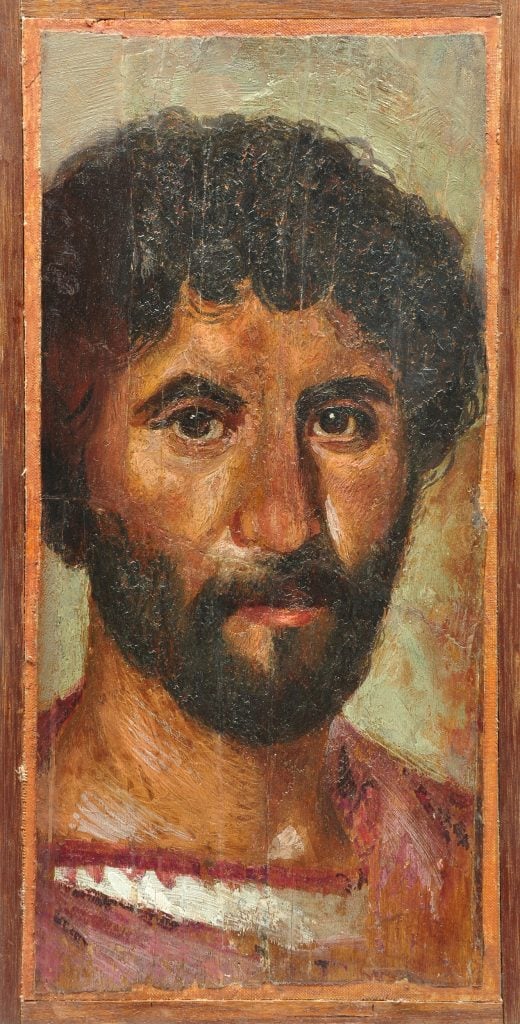
A Fayum portrait. Photo courtesy of Allard Pierson Museum.
The realism of the Fayum portraits was also imported, primarily from Rome, which officially annexed Egypt in 30 C.E., and indirectly from Greece. Their lifelike detail, demonstrating a clear understanding of human anatomy, stands in stark contrast to the more abstract and symbolic visual language associated with ancient Egypt today.
But while the portraits are lifelike, the question of whether they were true to life remains up for debate. “It’s difficult to judge the extent to which the paintings reflect what these people actually looked like,” Van den Bercken noted. “If, for instance, they really owned the jewelry we see in the images. It’s possible people were presented a bit wealthier than they actually were.”
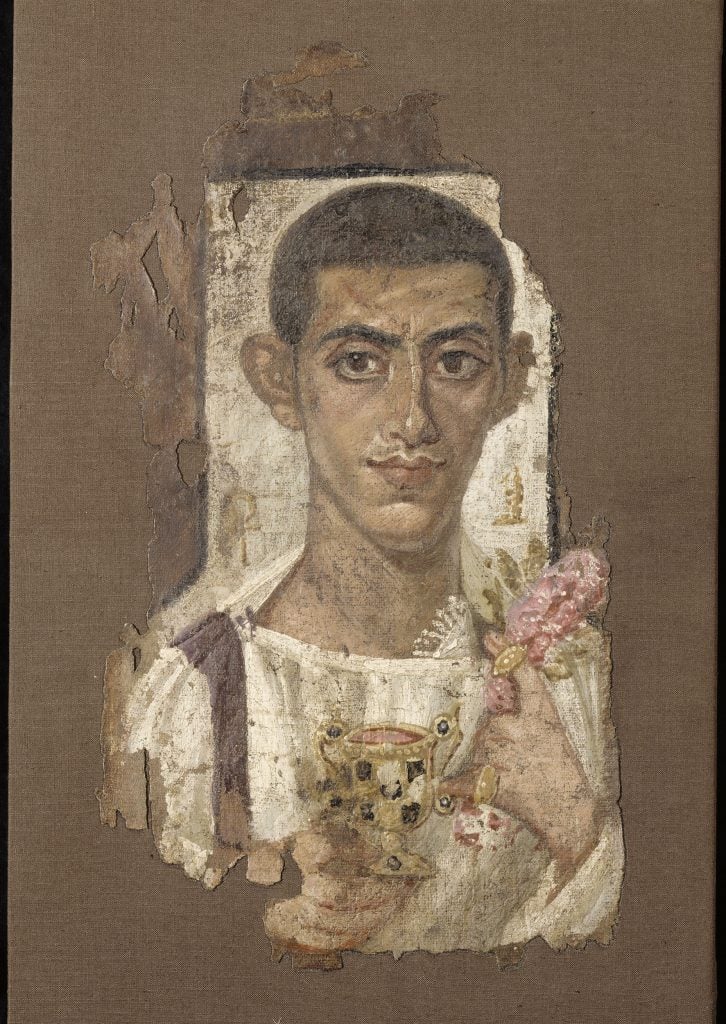
A Fayum portrait. Photo courtesy of Musée du Louvre, Department des Antiquités égyptiennes.
At the same time, funeral portraits would not have been cheap: “Look at the wood panels on which they were painted. Many of these are made of basswood, which came from outside Egypt. The same goes for some of the pigments.” This, he said, suggests the subjects were members of society’s upper class: men and women of considerable means.
Sticking with the subject of realism, keen observers will note that paintings produced in the 3rd and 4th centuries look different from those dated closer to the time of Julius Caesar. Where the latter rival Roman busts in their accuracy and precision, the former are more evocative of Byzantine icons, their personality obscured by a certain level of abstraction.
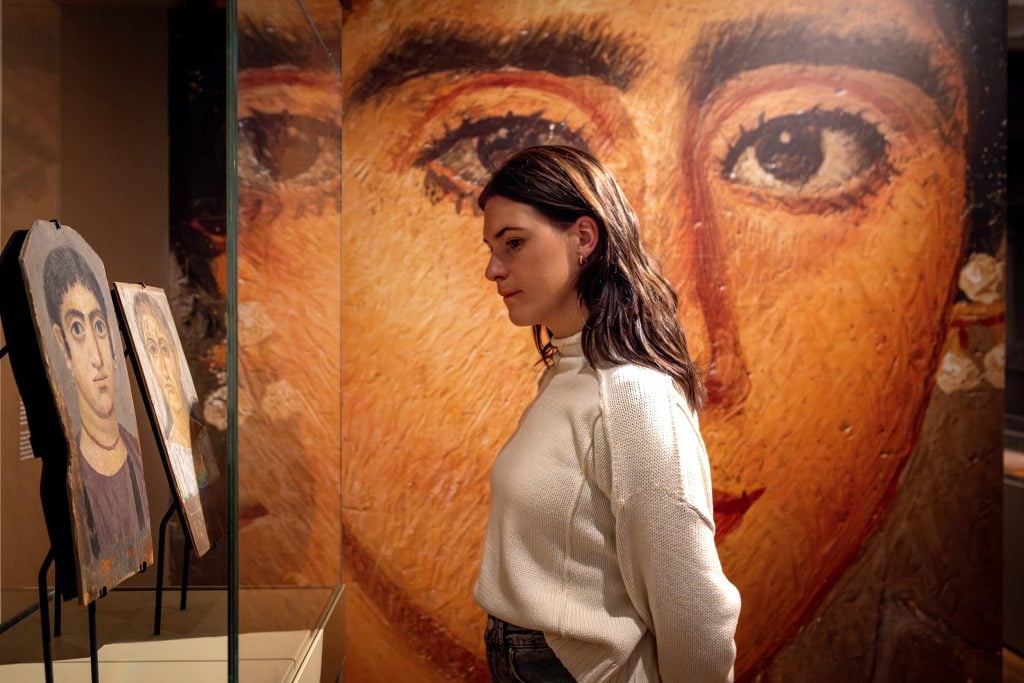
Installation view of “Face to Face: The People Behind Mummy Portraits” at the Allard Pierson Museum. Photo courtesy of Allard Pierson Museum.
Coincidence? This, too, is difficult to say. While Van Bercken does not rule out that evolving artistic currents on the Italian peninsula and Asia Minor influenced Egyptian brushwork, there simply isn’t enough evidence to draw a definite conclusion here. Differences in style, he explained, could just as easily be attributed to differences in geographic location or preferences of individual painters. On top of this, many of the portraits cannot be dated with 100 percent accuracy.
What is certain is that the tradition of funeral painting, which emerged during the 1st century B.C.E., gradually fizzled during the 4th century C.E. One possible explanation for development this is the rise of Christianity, declared the official religion of the Roman Empire by Theodosius in 380. When the religion spread from Rome to Egypt, mummification rituals made way for Christian burial ceremonies. As mummification disappeared, mummy portraiture followed suit.
“Face to Face: The People Behind the Mummy Portraits” is on view at the Allard Pierson Museum, Oude Turfmarkt 127-129, Amsterdam, Netherlands, through May 20.





